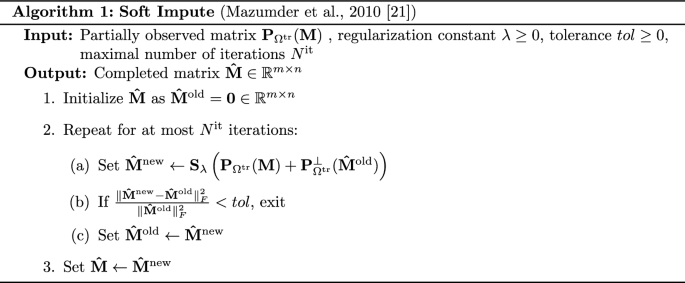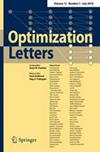基于矩阵完成优化问题,预测国家和部门的年二氧化碳排放量
IF 1.1
4区 数学
Q2 MATHEMATICS, APPLIED
引用次数: 0
摘要
摘要近年来,每年CO $$_2$$ 由于人们对污染和气候变化的担忧日益加剧,我们从不同的角度审视了国际层面的碳排放。然而,据作者所知,在国家和经济部门一级处理这种数据可能不准确/缺失的问题被忽视了。因此,在本文中,我们应用一种称为矩阵完成(MC)的监督机器学习技术来预测可用数据库中每个国家的年度CO $$_2$$ 2 .行业层面的排放数据,基于与所有行业相关的过去数据,以及与部分行业相关的近期数据。MC的核心思想在于提出一个合适的优化问题,即在矩阵(训练集)的一组观测元素的近似误差与重构矩阵的秩的代理(例如,它的核范数)之间的适当权衡之间最小化。在本文中,我们将MC应用于(人为)缺失元素的国家特定矩阵,其元素来自年度CO $$_2$$ 2 .不同行业相关的排放水平,在行业层面经过适当的预处理。结果突出表明,相对于单独的基线,MC与适当构建的基线估计相结合通常具有更好的性能。我们的分析的潜在应用出现在预测年度CO矩阵中目前缺失的元素 $$_2$$ 2 .排放水平和反事实的构建,有助于估计能够影响年度CO的政策变化的影响 $$_2$$ 2 .选定国家特定部门的排放水平。本文章由计算机程序翻译,如有差异,请以英文原文为准。

Prediction of annual CO2 emissions at the country and sector levels, based on a matrix completion optimization problem
Abstract In the recent past, annual CO $$_2$$ 2 emissions at the international level were examined from various perspectives, motivated by rising concerns about pollution and climate change. Nevertheless, to the best of the authors’ knowledge, the problem of dealing with the potential inaccuracy/missingness of such data at the country and economic sector levels has been overlooked. Thereby, in this article we apply a supervised machine learning technique called Matrix Completion (MC) to predict, for each country in the available database, annual CO $$_2$$ 2 emissions data at the sector level, based on past data related to all the sectors, and more recent data related to a subset of sectors. The core idea of MC consists in the formulation of a suitable optimization problem, namely the minimization of a proper trade-off between the approximation error over a set of observed elements of a matrix (training set) and a proxy of the rank of the reconstructed matrix, e.g., its nuclear norm. In the article, we apply MC to the imputation of (artificially) missing elements of country-specific matrices whose elements come from annual CO $$_2$$ 2 emission levels related to different sectors, after proper pre-processing at the sector level. Results highlight typically a better performance of the combination of MC with suitably-constructed baseline estimates with respect to the baselines alone. Potential applications of our analysis arise in the prediction of currently missing elements of matrices of annual CO $$_2$$ 2 emission levels and in the construction of counterfactuals, useful to estimate the effects of policy changes able to influence the annual CO $$_2$$ 2 emission levels of specific sectors in selected countries.
求助全文
通过发布文献求助,成功后即可免费获取论文全文。
去求助
来源期刊

Optimization Letters
管理科学-应用数学
CiteScore
3.40
自引率
6.20%
发文量
116
审稿时长
9 months
期刊介绍:
Optimization Letters is an international journal covering all aspects of optimization, including theory, algorithms, computational studies, and applications, and providing an outlet for rapid publication of short communications in the field. Originality, significance, quality and clarity are the essential criteria for choosing the material to be published.
Optimization Letters has been expanding in all directions at an astonishing rate during the last few decades. New algorithmic and theoretical techniques have been developed, the diffusion into other disciplines has proceeded at a rapid pace, and our knowledge of all aspects of the field has grown even more profound. At the same time one of the most striking trends in optimization is the constantly increasing interdisciplinary nature of the field.
Optimization Letters aims to communicate in a timely fashion all recent developments in optimization with concise short articles (limited to a total of ten journal pages). Such concise articles will be easily accessible by readers working in any aspects of optimization and wish to be informed of recent developments.
 求助内容:
求助内容: 应助结果提醒方式:
应助结果提醒方式:


